The hidden secret of CHANCE by CHANEL is Goude
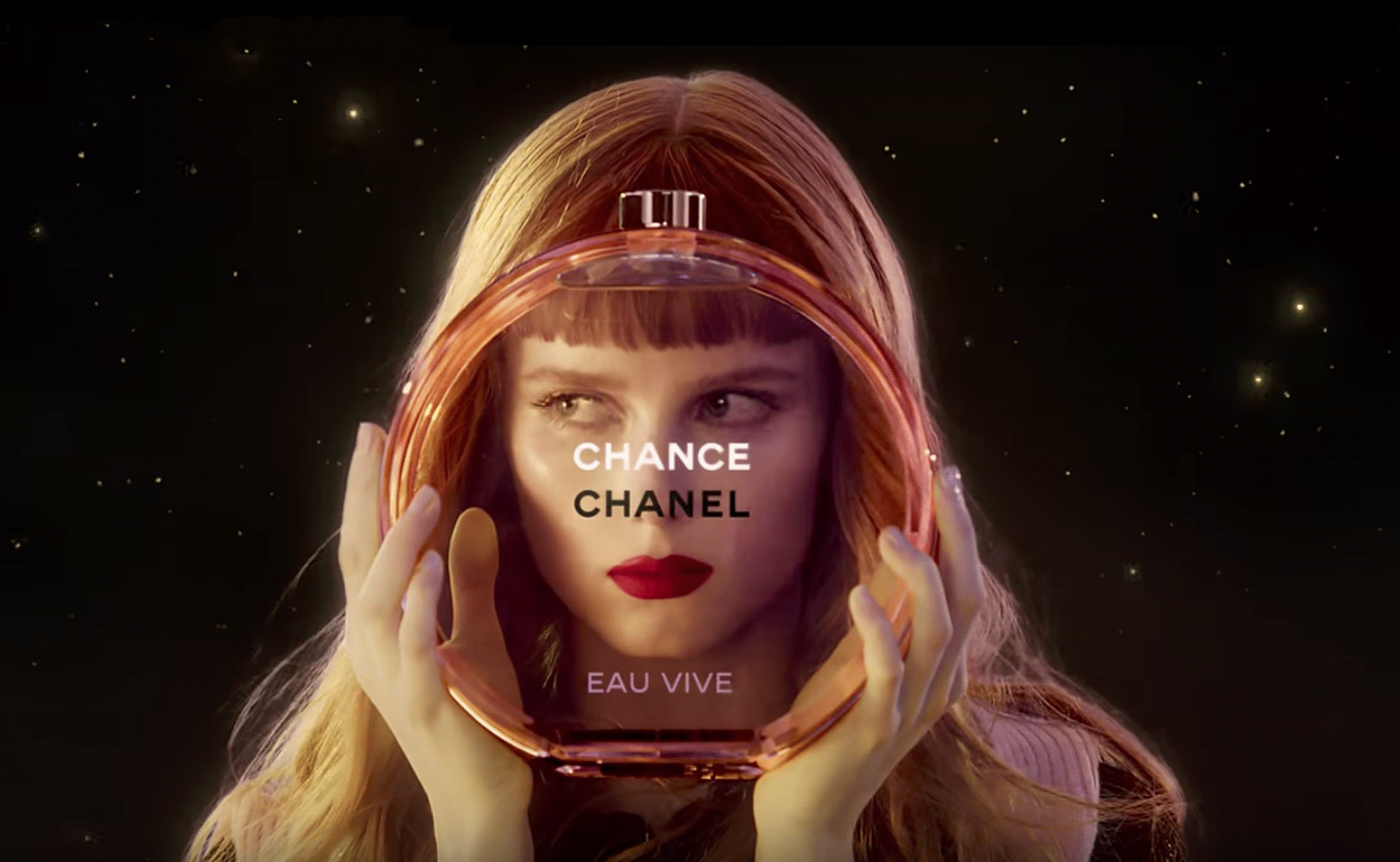
This is an article in the form of a semiological investigation or interpretative delirium - take your pick - on the symbolic mystery of a 2016 advertising campaign directed by Jean-Paul Goude. In the same vein, we have already talked about Natalie Portman, serial killer at Dior - hang on, it's going to be a wild ride!
It all starts with advertising
How can advertising enchant the world when we keep saying that its sole purpose is to maintain the consumer society, by creating an impulse in consumers to buy goods they don't need most of the time? Is it possible to associate "thirst for the ideal" with "commercial things" - to borrow Alain Souchon's prose?
Of course, exceptions are rare and, most of the time, advertising flatters our baser instincts to seduce us. However, on rare occasions, the advertising sphere can offer us UFOs that seem to escape simple marketing specifications to project us towards an unexpected elsewhere. Let's take a look at the latest campaign for Chanel's Chance perfume, directed by Jean-Paul Goude.
Too Goude to be true
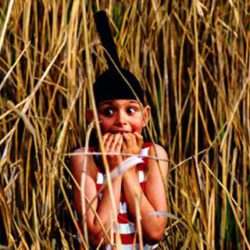
But first, who is Jean-Paul? Mr. Goude is a graphic designer, illustrator, director, producer... but above all, a photographer. Through his compositions, he becomes all these things at once, a sparkling eye that creates and transmits a vision brimming with life. Labels don't really suit him; you could say he's more of an image magician. Magician because he creates dreamlike universes in which expressive bodies transcribe their emotions in settings of equally vivid colors and movements.
Starting out as an illustrator for Printemps, in the 80s he created Kodak's new visual code with Young&Rubicam, inventing the color-stealing Kodakettes.
His fantastic, joyful universe has earned him a place in the hearts of magazines (Esquire, Vogue) and brands such as Perrier, Orangina, Kenzo and Chanel. He delights in "sublime giants", as he calls them, these muse-women with endless legs, bountiful buttocks (like Grace Jones or Kim Kardashian), and exalted smiles.
These signature elements recur over and over again in his work, so much so that by cutting out pieces of legs you can have fun making graphic patterns ( I could decorate my bathroom with them):
Jean-Paul Goude's visuals are the height of his imagination, and the photo format is not a constraint - on the contrary. Goude cuts, pastes and reconstructs his images, with or without Photoshop, to bring together the real and the imaginary. Ribbon and pom-pom women, statues, Aphrodite and Hindu goddesses come to life under his lens, based on his model drawings.
His work for Galeries Lafayette until 2014, featuring Laetitia Casta as chic, explosive, Amazonian or masculine, is a case in point.
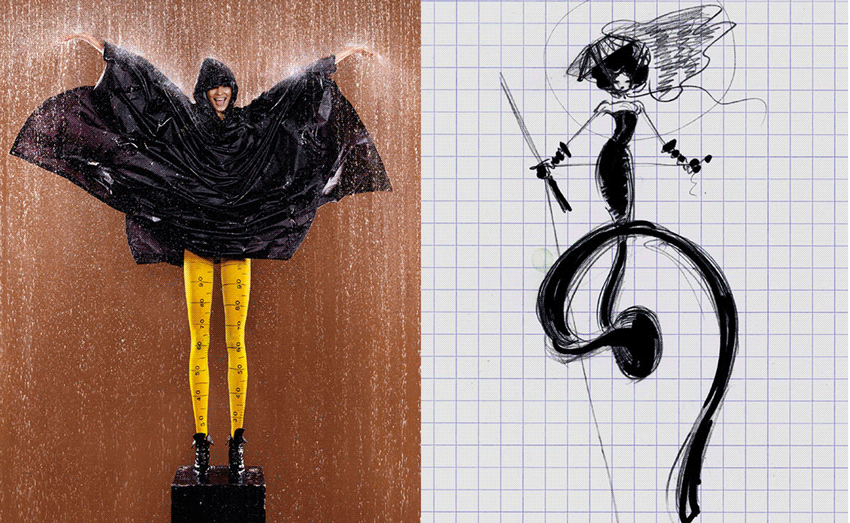
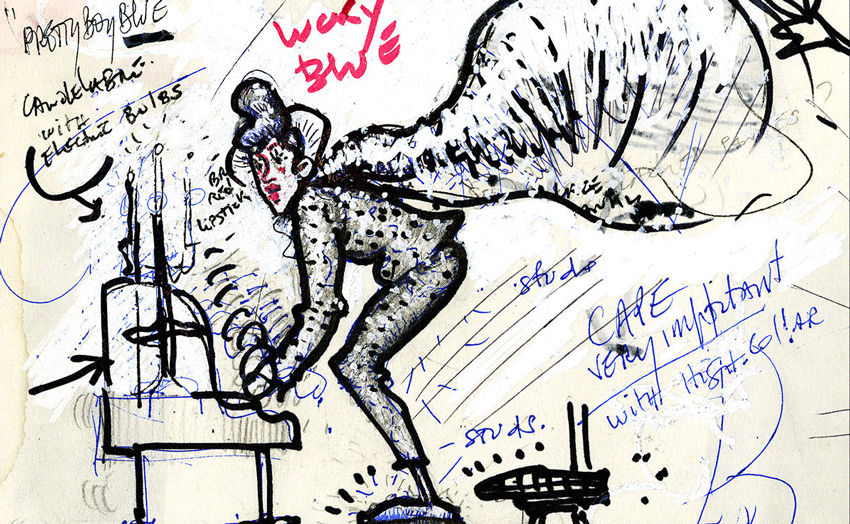
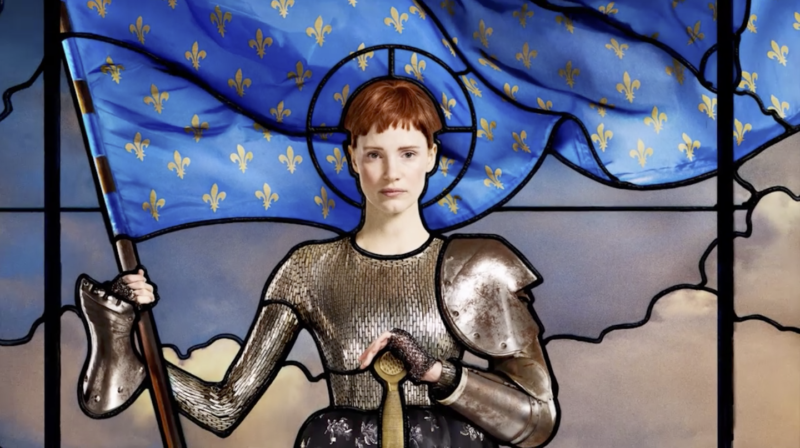
photo source : www.jeanpaulgoude.com
Exuberance, sensuality and emotion are the watchwords. Just recently, Jean-Paul Goude was offered the position of AD for Desigual. The new collection will be launched in September, but in the meantime, a glimpse of the runway show suggests a joyful, exotic and free-spirited collaboration. Values deeply rooted in both Goude and the Spanish brand.
Setting the scene
Before we start analyzing and interpreting Goude's Chance de Chanel advertising campaign, let's simply list the advertising elements put in place by the brand:
- 4 campaign visuals
- 1 TV spot
What's surprising at first glance is that each staging doesn't try to entice the viewer.
There are no knowing or languorous glances from the models in our direction.
This ad doesn't seek to titillate our libidinal instincts by offering us a fantastical relationship.
We witness the scene from a completely external point of view, in a situation similar to that of an audience watching a theatrical performance. Something is happening, and we're offered the chance to witness it. It's a pastel universe that's both modern and poetic, and seems designed to appeal to the younger generation.
It's difficult to analyze these elements in isolation, as they work together like panels in a single story. That's why, in this analysis, I'll be making regular references to all the campaign's visuals and cinematographic elements.
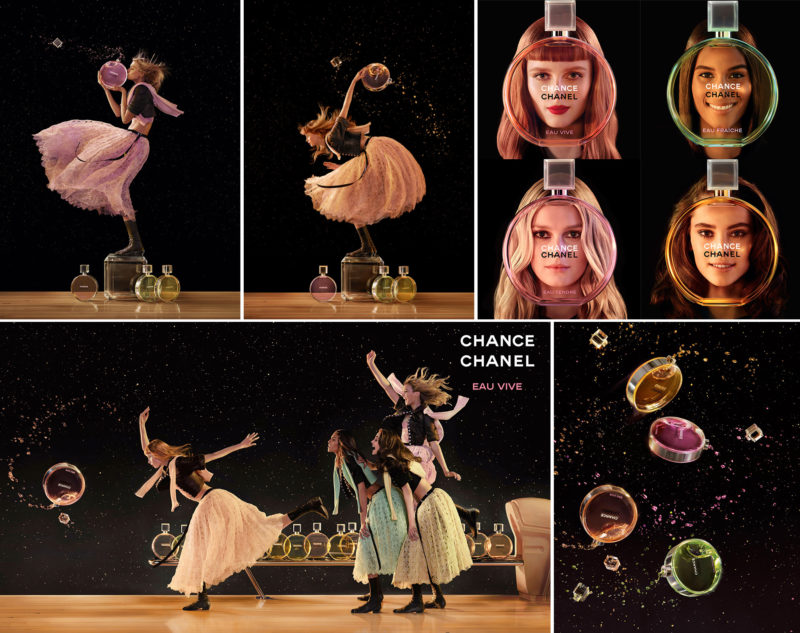
Analysis of Chanel's Chance advert
CHANCE EAU VIVE : The Film - CHANEL
With Rianne Van Rompaey, Sigrid Agren, Cindy Bruna, and Romy Schonberger.
Art Direction: Jean-Paul Goude.
Original Music: Eric Spring, Alexandre Pellet and Julien Vichnievsky.
Styling: Alex Aikiu.
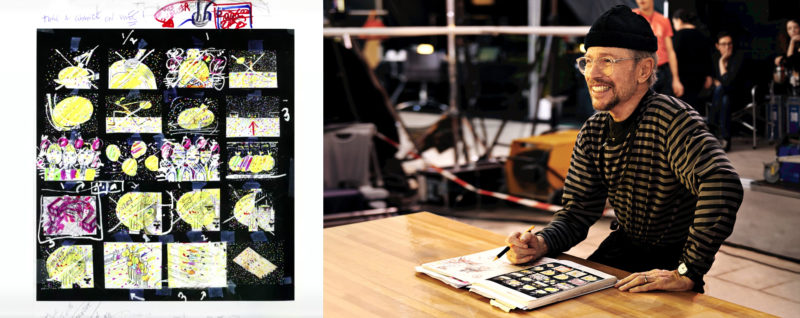
We attend a bowling match played by 4 women. Why a bowling alley where the balls are replaced by perfume bottles? It goes beyond the purely formal analogy of the round shape of the bottle. Jean-Paul Goude has accustomed us to the most offbeat, humorous and mischievous visual creations. Is this formal resemblance between the sphere of the bowling ball and the round shape of the bottle simply the motif of this bowling idea? It's impossible to know, but perhaps it's really Goude's creative starting point for this campaign. An iconic bottle with a pure circle.
But why a bowling alley against a starry black background?
Could this bowling alley be lost in the middle of space?
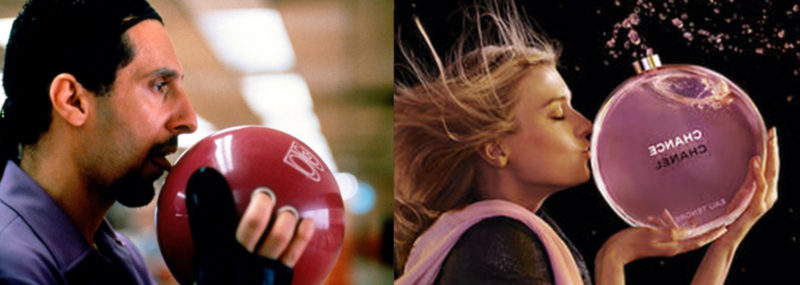
The lucky ball
The first reading shows the big picture of what's happening. A woman embraces the perfume bottle, while the cork pops out, releasing fine droplets of perfume into the sky. A classic metaphor for the woman's embrace of the perfume, which provokes sexual pleasure and heralds the degree zero of the advertising promise.
In the context of the bowling game, this kiss could be limited to a popular gesture that brings good luck and is intended to provoke good fortune. This, so that the perfume reaches its target to achieve the best score and why not, make a strike! Consistent since the perfume's name is...
The parallel can be drawn with the fetishistic, exuberant Jesus Quintana played by John Turturro in the Cohen brothers' film The Big Lebowski. During the famous bowling scene, he unites the two symbols - sexual and good luck - in a single gesture, licking his bowling ball before playing.
God is a bowler

Four Goddesses: Anthropomorphic stars
These four women are not simply goddesses in terms of their beauty and modeling qualities. They are goddesses in the mythological sense, for each is the personification, the anthropomorphic representation of a star. To affirm this, we need to demonstrate that each perfume bottle is staged in such a way as to suggest that they are celestial globes moving in space. The 4 goddesses seem to be re-enacting the legend of the creation of the universe. The primordial gesture of creation that sets the galaxies in motion and positions the stars. The fragrances are launched onto the runway. The juice gushes out and its projected droplets materialize constellations and star clusters in the night sky.
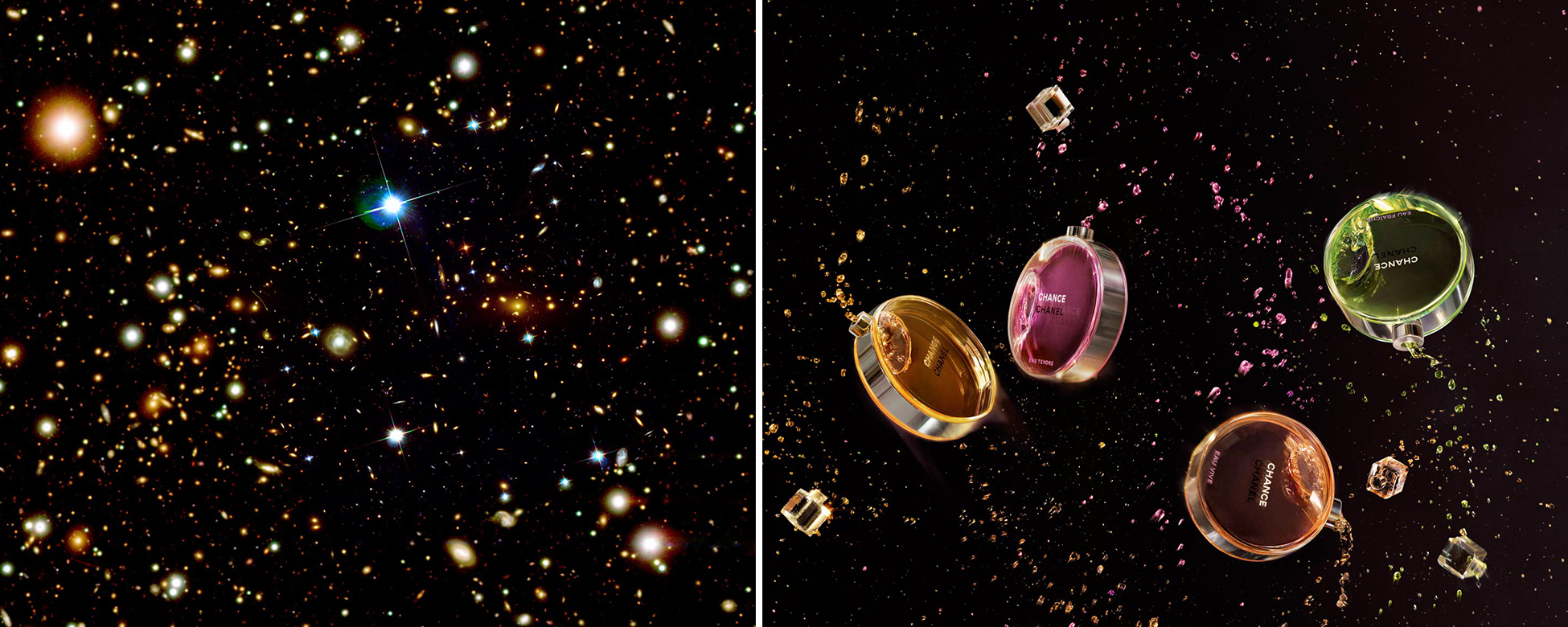 Comparison between a shot of the cosmos showing clusters of galaxies, and one of the visuals for the Chanel Chance campaign.
Comparison between a shot of the cosmos showing clusters of galaxies, and one of the visuals for the Chanel Chance campaign.
A second reading reveals the staging and styling of the scene.
The motif of the pedestal is recurrent and even typical of Jean Paul Goude's work. It acts as a pedestal, transforming the photographed subject into a divine figure who no longer touches the ground. This staging creates a "statufication" of the mannequin, turning it into a character who, while not necessarily divine, instantly becomes a legendary being, entering the sphere of the mythological. This materialization of an actor in stone brings him closer to the ancestral tale. Here, it's the cork on a deliberately disproportionate scale that acts as a pedestal for the woman embracing the perfume.
We're witnessing a cosmogonic bowling scene: a phantasmagorical universe, a symbolic and mythological parable: the creation of a world!

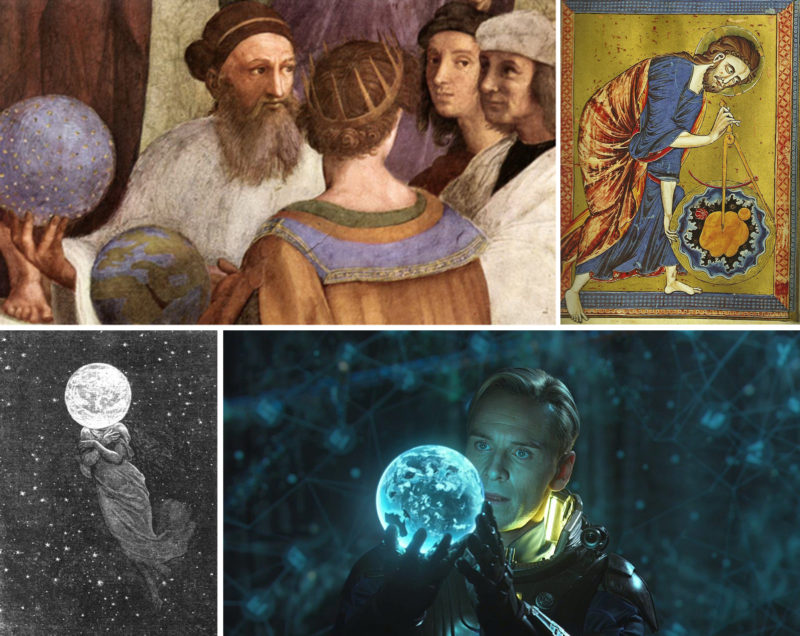
The fascination of the spheres: Raphael's cosmologists - The architect God -
Heron...
The very mannerist and incoherent treatment of the clothing accessories attracts my attention. (It would be interesting to have Goude's point of view, an image creator who could be described as Mannerist in the tradition of the Italian painters of the 16th century, on the current obligation to mention "retouched photograph" on bodies that have undergone digital surgery in advertising visuals...)
On one side, the belt that extends and swings seemingly without reason in an arc over the skirt. And on the other, the sleeves of the jacket, peaked like a scarf, swinging back. Drawn in by an inverted draught. There's something wrong with this composition, which might seem perfectly normal for a Jean-Paul Goude creation where the body and fabric are highly malleable materials capable of materializing any whim.
Only here, the clothes seem to be distorted, as if they're trying to tell us something. Yes, but what? I look at the silhouette of the ensemble to try to understand this strange intention, and all of a sudden, I see that the waistband draws a curvature that looks like a wing folded over the pink, fluffy material of the skirt. Hallucination? I might have a wing! But to verify this intuition, I need the rest of the beast. I then return my gaze to the absurd tip of the jacket, which projects onto the woman's back, and I finally understand what this piece of fabric is miming: a beak!
A bird hides in the damsel's drapery!
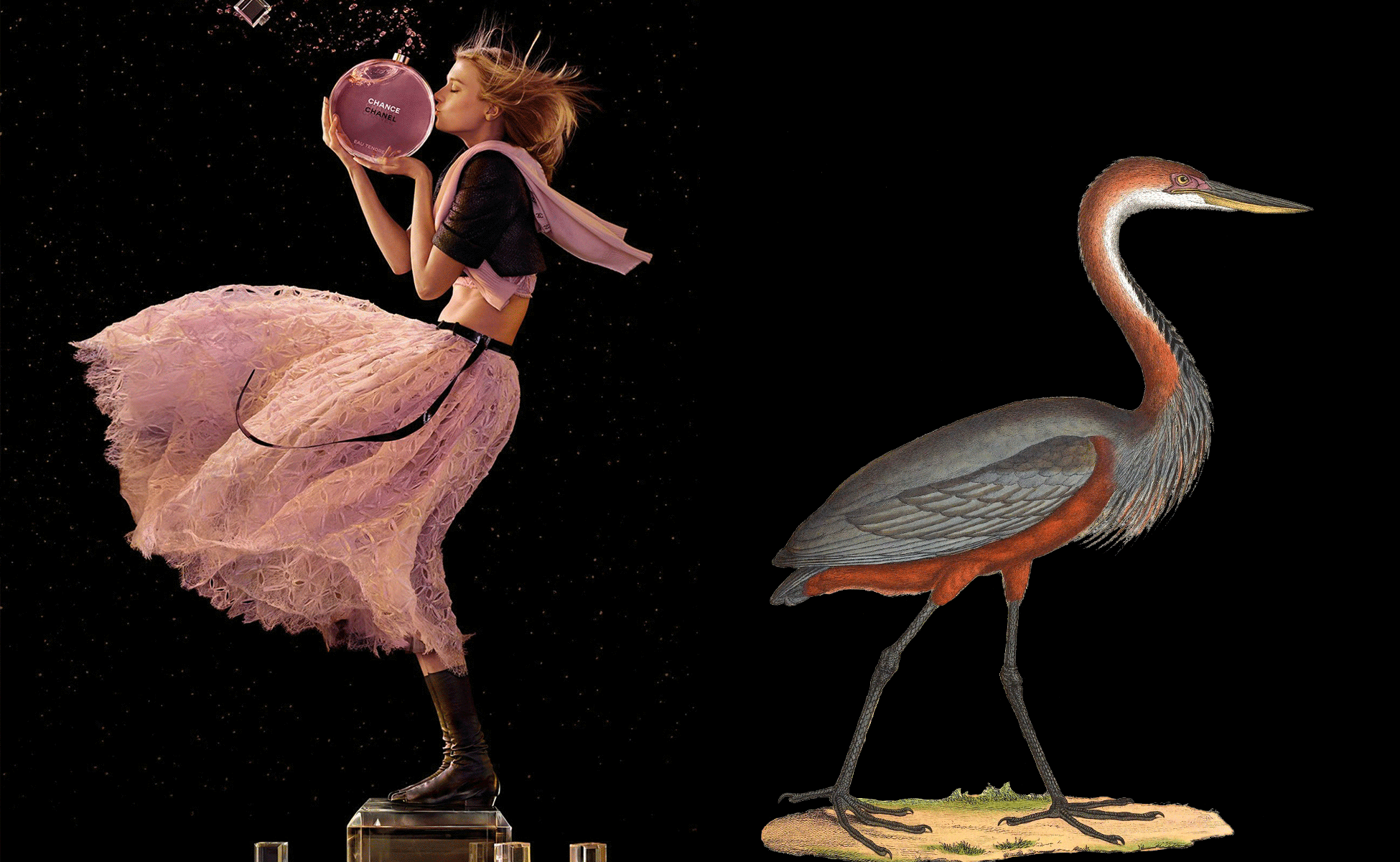
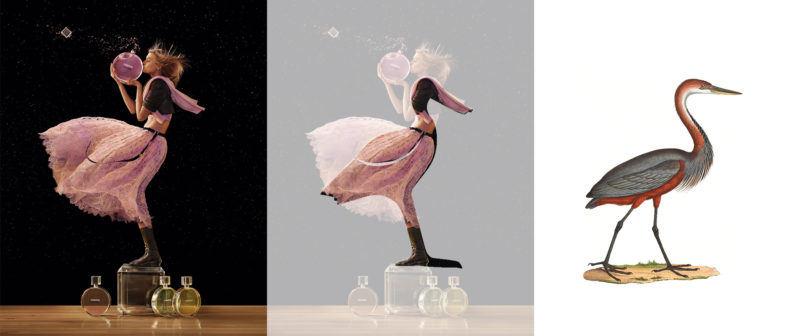
A strange bird hides in the bowler's pose. Its slender silhouette bears an uncanny resemblance to a heron.
Does the discovery of this hidden symbol give new meaning to the image?
The discovery of this heron gives a new symbolic reading to the image. If it's as cosmic as this bowling match, then it can be equated with Benou. Benou is a sacred bird that represents the soul's bâ and the sun god Ra. The sun disk (on the heron and on the stern of the boat) are also symbols of Ra. The circular shape is similar to that of the perfume bottle and the cosmic egg. Like the sun, the heron rises from the primordial waters of the Nile. Its name, Benu, was probably derived from the word Weben: to rise or shine.
The bird Benu is related to the phoenix. Both are birds of the sun, both are self-created. Rather than being born of other creatures, both undergo death and regenerate. The Egyptian sunbird is associated with Ra, the Sun God.
The Benu has been associated with the Temple of the Sun God at Heliopolis, revered by the Egyptians as the sacred mound from which the Sun God, in his Benu bird guise, is cyclically born to renew Egypt.
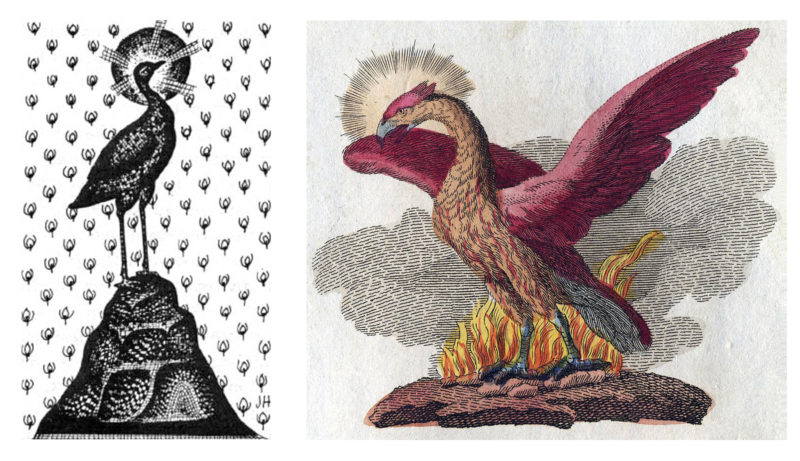
Zoological mythology
Jean-Paul Goude est né et a grandit à Saint Mandé. Lorsqu’il était enfant, ses sorties les plus appréciées sont les promenades du Zoo de Vincennes - il possède d’ailleurs une réplique miniature de la montagne artificielle du zoo dans son atelier - et les visites du Musée des colonies de la Portes Dorée, qui deviendra le Musée d’art d’Afrique et d’Océanie, puis le Musée de l’immigration suite à la création du Musée du quai Branly. Sa magnifique « tapisserie de pierre » qui constitue le bas-relief de sa façade, réalisée par Alfred Auguste Janninot, est une illustration des apports économiques des colonies à la métropole. Ce sont ces sorties qui ont très tôt forgées l’univers créatif de Goude, composant une mythologie personnelle entre bestiaire imaginaire et fantasmes de l’exotisme.
Jean-Paul Goude was born and raised in Saint Mandé. As a child, his most favorite outings were walks to the Vincennes Zoo - he has a miniature replica of the zoo's artificial mountain in his studio - and visits to the Musée des colonies de la Portes Dorée, which later became the Musée d'art d'Afrique et d'Océanie, then the Musée de l'immigration following the creation of the Musée du quai Branly. Its magnificent "stone tapestry", created by Alfred Auguste Janninot and forming the bas-relief of its façade, illustrates the economic contributions of the colonies to metropolitan France. It was these outings that forged Goude's creative universe early on, composing a personal mythology between imaginary bestiary and fantasies of the exotic.
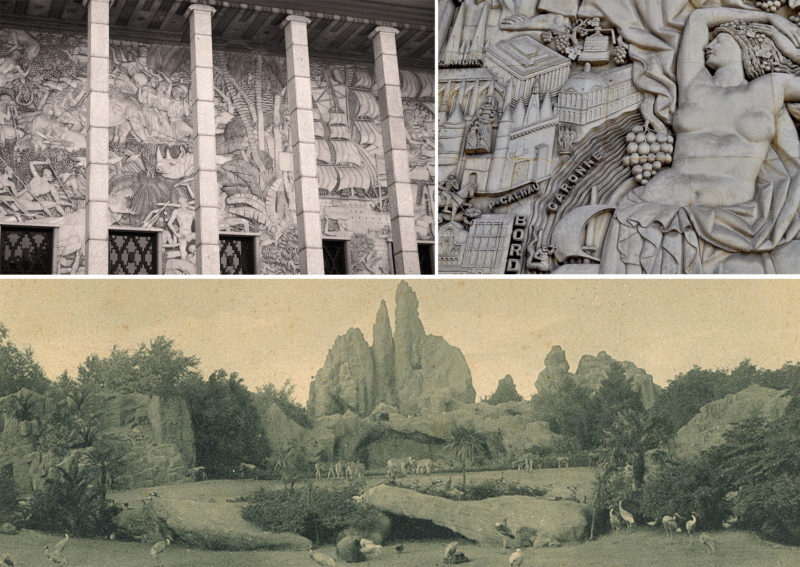
The Palais de la Porte Dorée and the Vincennes Zoo, cradle of Jean-Paul Goude's imagination
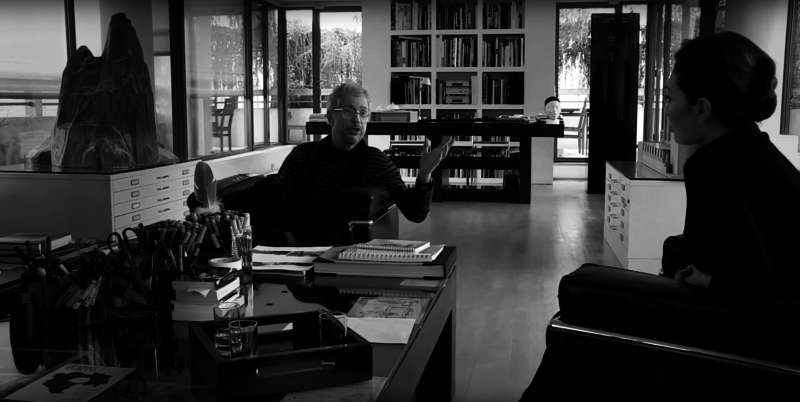
Visual extract from the interview "Jean-Paul Goude- Love, Money, God:interview with icons and muses" produced by Showstudio.
The Phoenix of these woods' hosts
So why hide a bird? A conscious or unconscious act on the part of the creator?
Perhaps it's simply the artist's malice and obsession with animals.
Many famous pictorial works conceal more or less questionable subliminal forms. Such is the case of the brain hidden in the silhouette of the drapery surrounding God and his angels in Michelangelo's Creation of Adam on the ceiling of the Sistine Chapel. Or the kite in Leonardo da Vinci's painting of Saint Anne en tierce.
This game of "hide-and-seek" is also very common in advertising posters, in more or less subtle ways, as illustrated by the visual for the promotion of Lolita Lempicka perfume, where we can better understand what the female character is bathing in when we discover what's hiding in the background... (especially when we linger on that milky white drape). Salvador Dali's unbridled surrealism is a perfect example of this mischievous use of hidden motifs.

Michelangelo used to hide anatomical dissections in his paintings, Leonardo da Vinci is said by Freud to have been traumatized by a bird as a child, and advertisers of course can't resist hiding manly limbs...
Or is it for its symbolic power?
Taken in isolation, each image functions as a hieroglyph. Taken together, the whole campaign resembles a bas-relief fresco: no perspective and a treatment of the image in which almost all the elements are in profile. This graphic style could be inspired by the pictorial style of ancient Egyptian bas-reliefs and drawings. This gives the whole image a very "flat" appearance, with everything working in two dimensions, bringing the composition closer to the pictorial style, despite the fact that the whole is photo-realistic.
This treatment is not surprising, given that Goude is a virtuoso draughtsman who is accustomed to sketching all his visual inventions on paper.
It's always the old jars that make the best jam, and this is even truer when it comes to symbolism, where ancient Egypt continues to inspire today's stars in their quest for deification! Take, for example, Rihanna and her famous tattoo of the goddess Isis, and Drake, who has chosen the hieroglyph of an owl as the logotype for his "ovo" sportswear brand.
![]()
Confrontation between the graphic codes of profile representation in ancient Egyptian bas-reliefs and the aesthetics of Chanel's Chance advertising: the visual treatment and positioning of the hands in relation to the sun disk on the one hand, and the perfume on the other, are very similar.
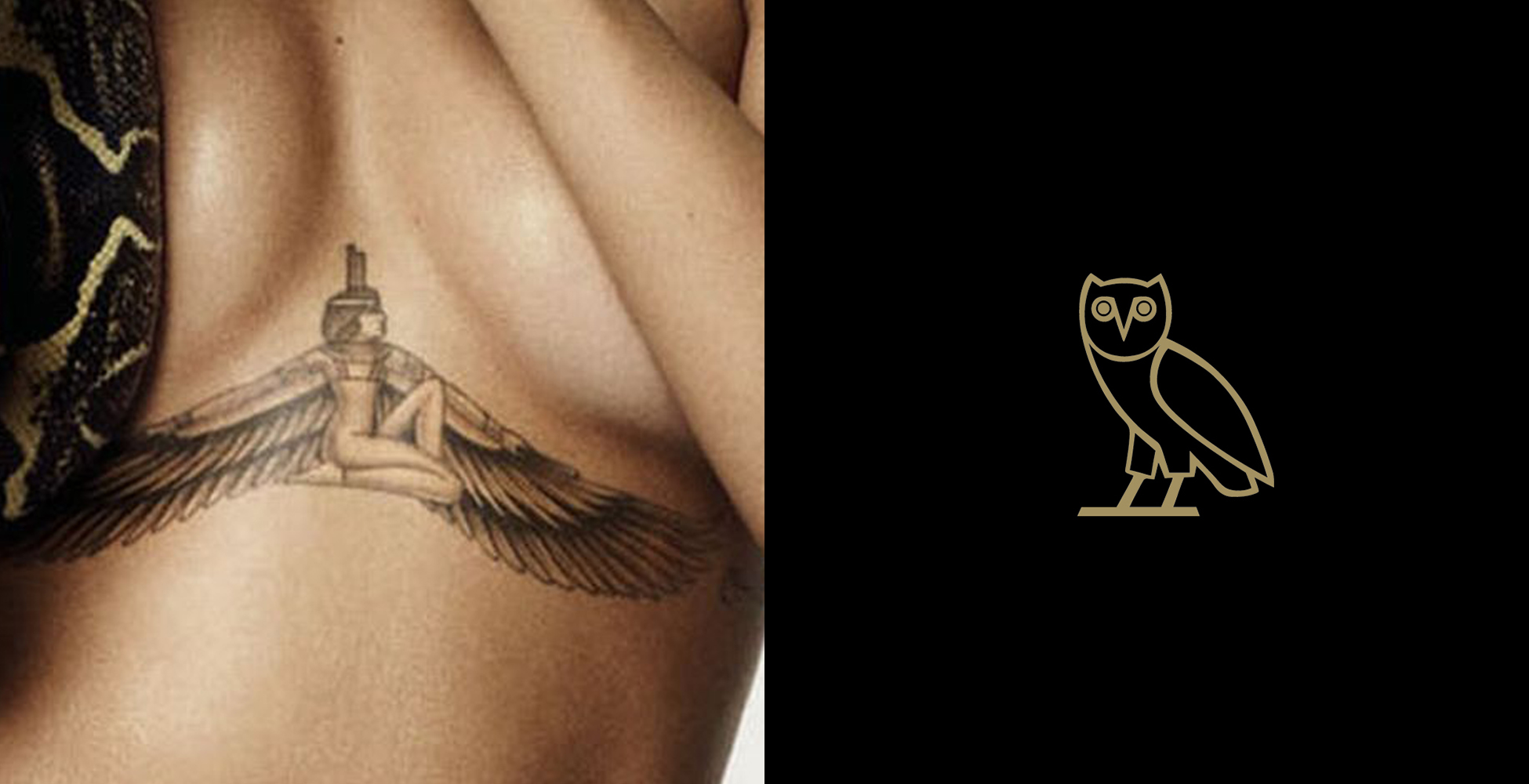
A touch of Rihanna and Drake, just for fun ;)
Goude, a man of bestial women
More simply, perhaps this bird is present simply for the pleasure of the graphic game?
The pleasure of repetition, which, for Jean-Paul Goude, has already led to the incarnation of the famous panther woman by Grace Jones, the sphinx woman by Laetitia Casta for Galeries Lafayette, Estella Warren as a mermaid woman for Chanel 5, or the bird woman Vanessa Paradis caged for Chanel's Coco perfume. Goude's graphic work is full of women transformed into animals.

The animal woman, a recurring motif in Jean-Paul Goude's work
Big bang or strike theory ?
#Mindfuck #storytelling #toogoudetobetrue #neverendingstory
It's going to be very difficult to conclude this article, as it will be impossible to verify the symbolic parallels supposedly contained in this Chanel commission for Goude. Jean-Paul, if you'd care to explain... Beyond the fantasies and obsessions that may feed the inspiration of the creative Goude, we can however agree on the iconographic strength of his work. CHANEL's 2016 CHANCE campaign is a modern, playful and feminist cosmogony, re-enacting the myth of the birth of the universe according to the fantasies of its creator.
What is confirmed, however, is that I'm suffering from acute symbolite syndrome coupled with carabid pareidolia: all these parallels and happy ramblings are my own! To conclude - because you have to know when to stop - I'm simply fascinated by this campaign by Goude, because it questions the gap between the advertising order and the skill of the visual creator who manages to tell a story that goes beyond the client's issues... So even if we remain "attracted by the stars, the sails..." and advertising never stops promoting commercial things, the proof is in the pudding that it will sometimes rise from its ashes. If it could always be reincarnated as quality brand content, it would be better for everyone.
Texts : Jérémie Fesson
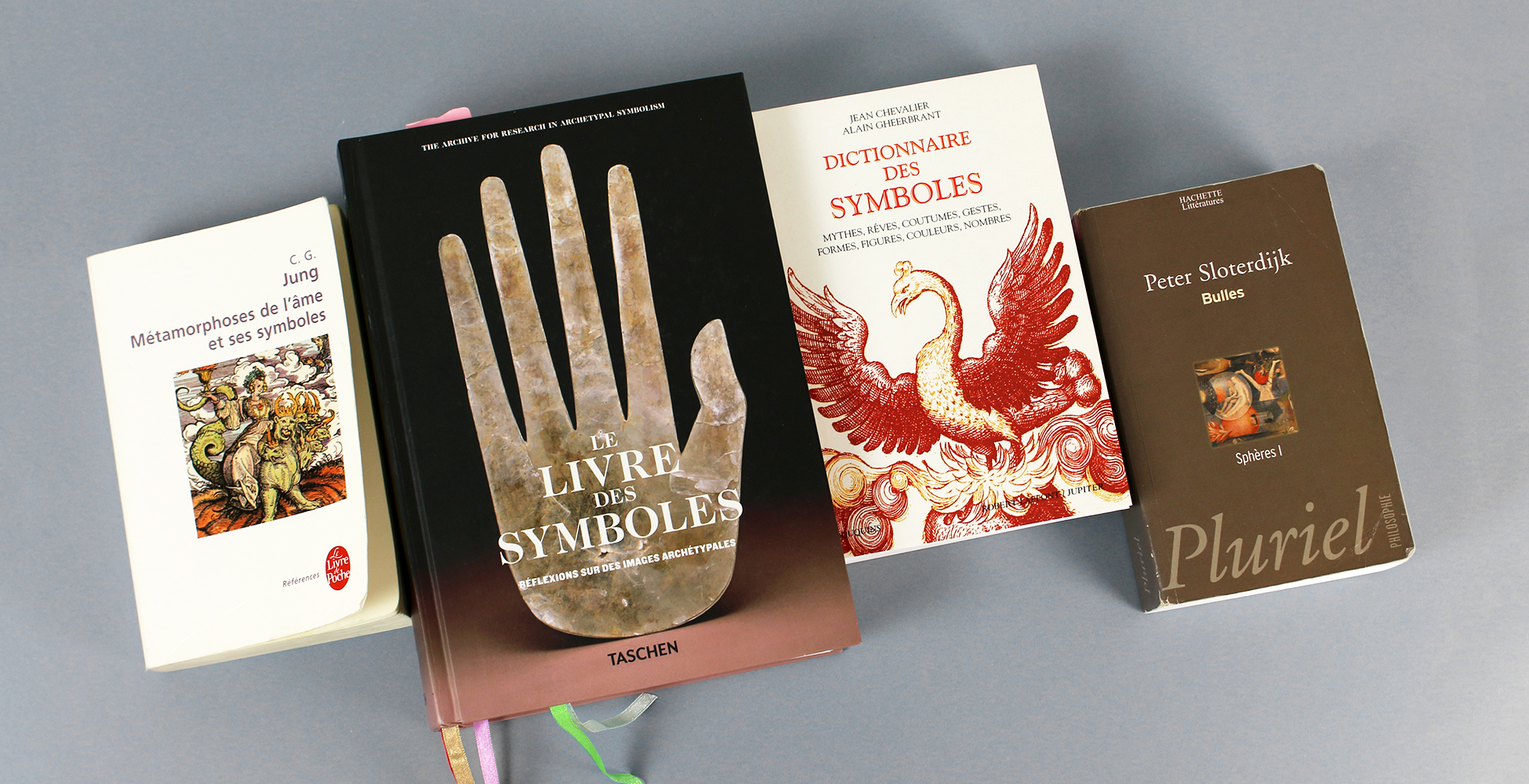
A selective bibliography for the curious:
- Goudmalion, catalog of the Musée des Arts Décoratifs exhibition -Éditions de la Martinière
- Sphères Tome I ; Bulles by Peter sloterdjik -Éditions Pluriel
- Métamorphose de l'âme et ses symboles by C.G. Jung -Éditions Livre de Poche
- Dictionnaire des symboles by Jean Chevalier and Alain Gheerbrant -Éditions Robert Laffont
- The Book of Symbols - Éditions Taschen
Share this post:

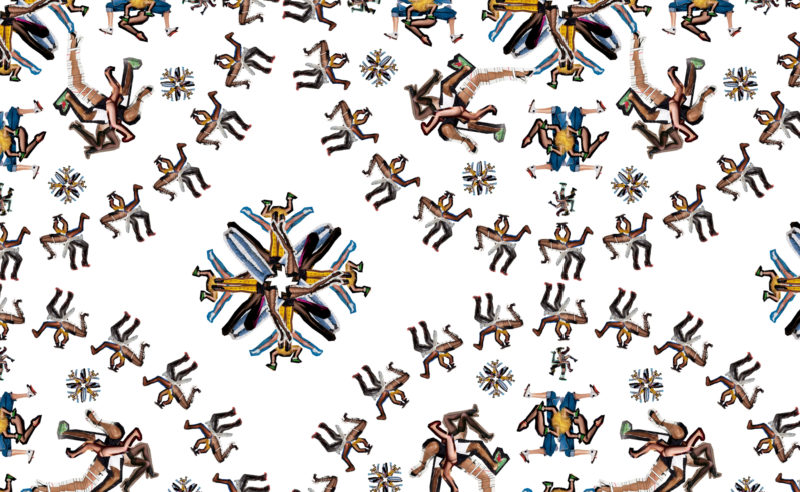
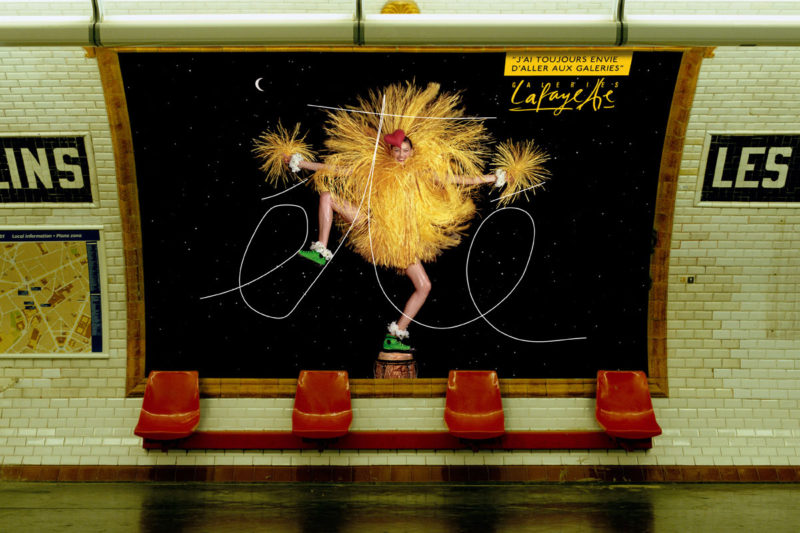

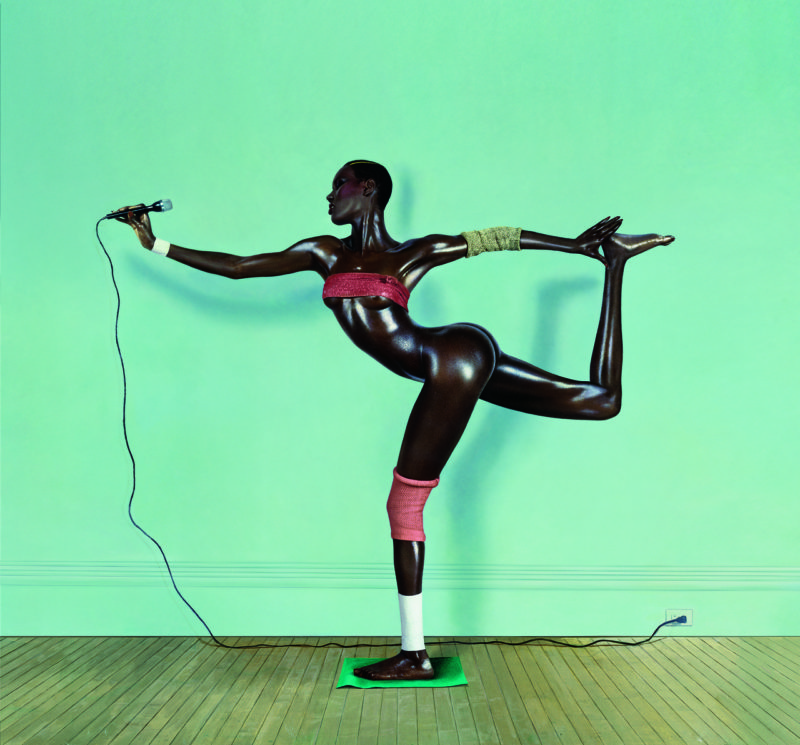
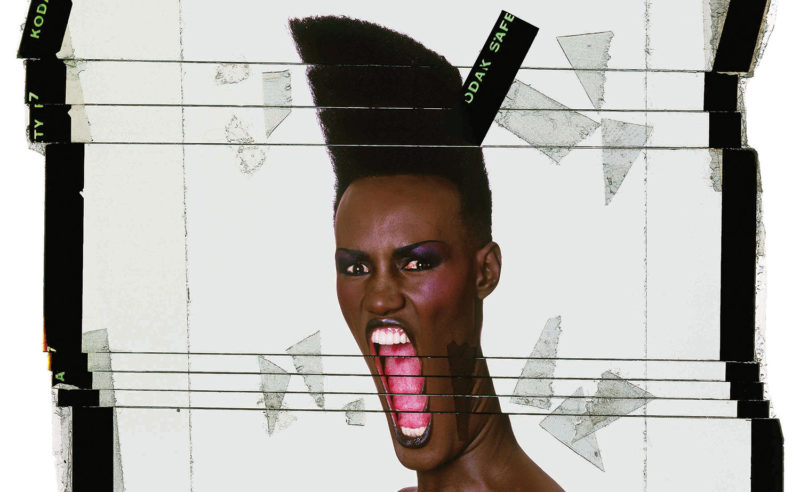
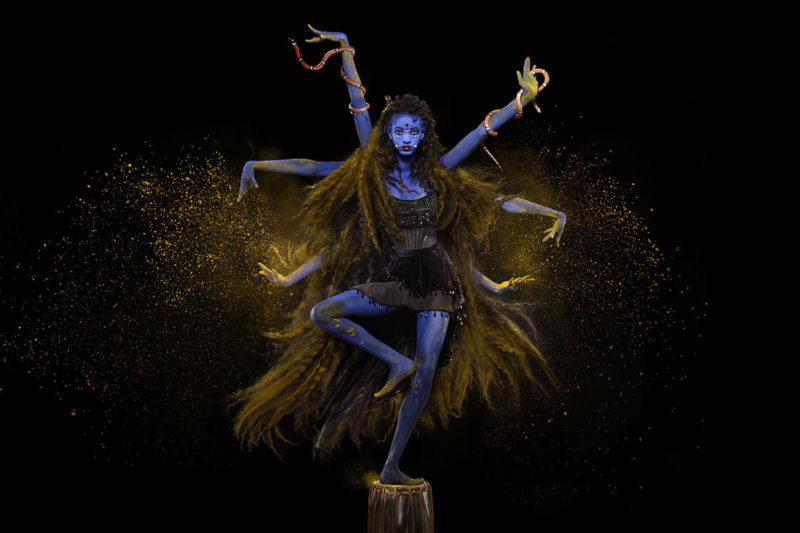
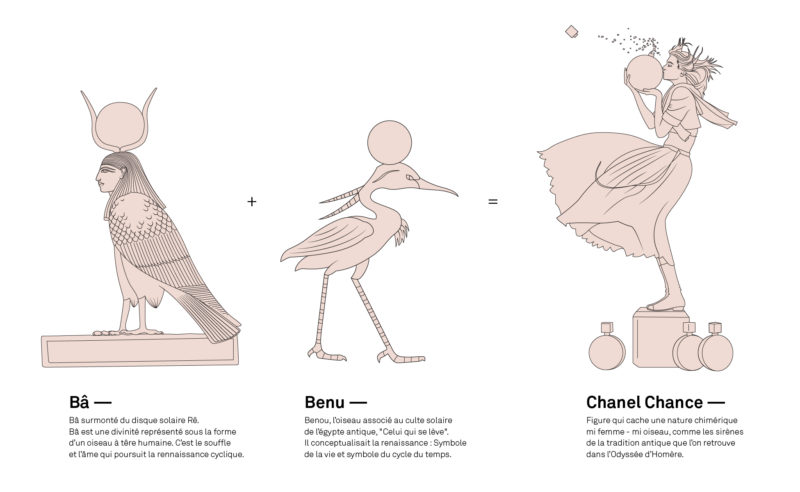
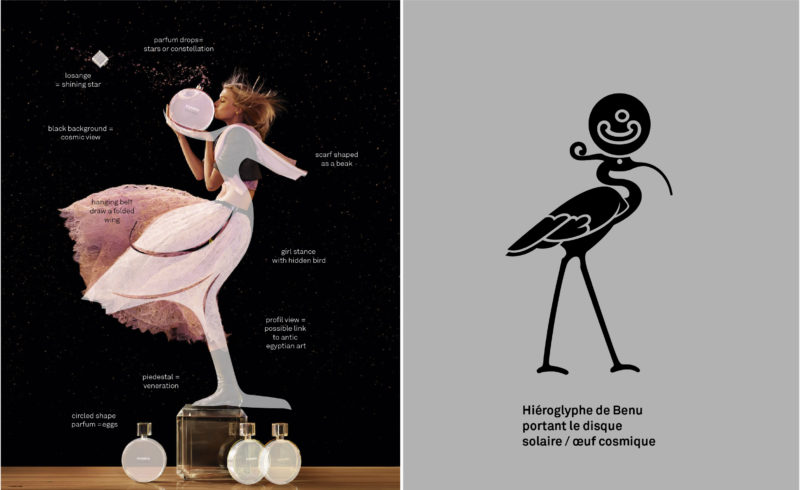
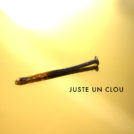
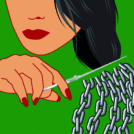

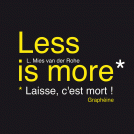
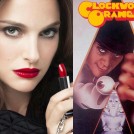
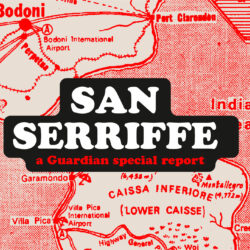 San Serriffe typographic Island
San Serriffe typographic Island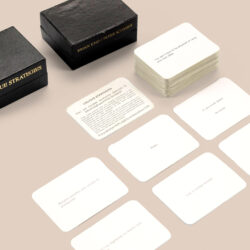 Design, creativity and oblique strategies!
Design, creativity and oblique strategies!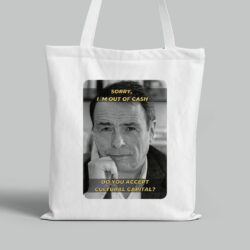 Tote bag, a new social totem?
Tote bag, a new social totem?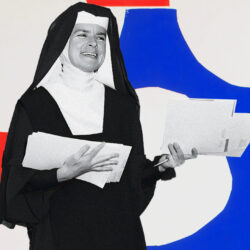 Sister Corita Kent, the Pop Art nun
Sister Corita Kent, the Pop Art nun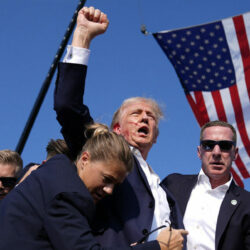 Donald Trump, the martyr who makes history
Donald Trump, the martyr who makes history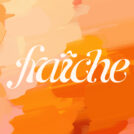 Fraîche design thinking
Fraîche design thinking Eurex, accountancy and consulting – Visual identity
Eurex, accountancy and consulting – Visual identity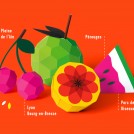 Pérouges Spring Festival 2014 – Poster design
Pérouges Spring Festival 2014 – Poster design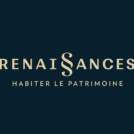 Renaissances, real estate promotion – Brand identity
Renaissances, real estate promotion – Brand identity Ben Bos, the big “Bos” of dutch graphic design!
Ben Bos, the big “Bos” of dutch graphic design! Trump was a graphic designer!
Trump was a graphic designer!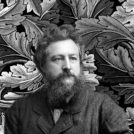 William Morris: (interior) design is not a luxury
William Morris: (interior) design is not a luxury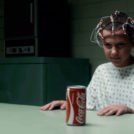 Brands and movies: a history of product placement
Brands and movies: a history of product placement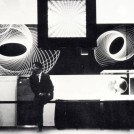 Josef Müller-Brockmann “swiss style”
Josef Müller-Brockmann “swiss style”
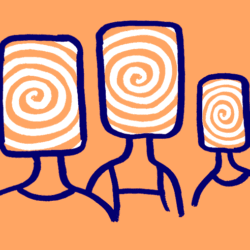
Leave a Reply